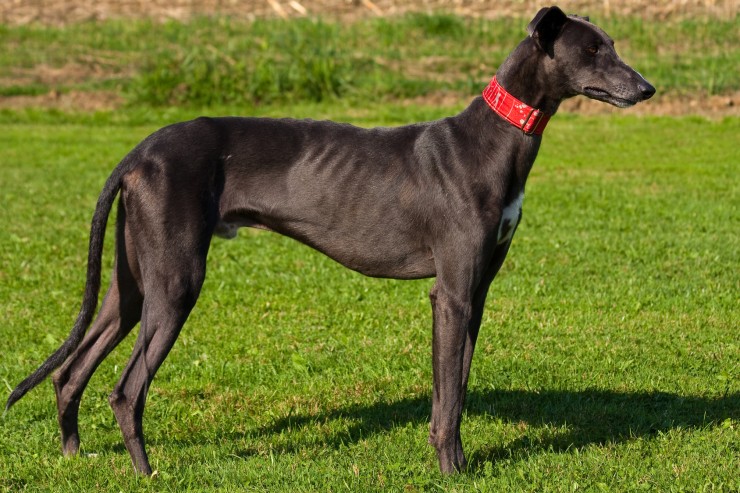
Sweet Itch is a problem for many equine owners. In the United Kingdom, Sweet Itch is at its most prevalent during the months of April to October. In other parts of the world, this may vary.
Although the symptoms are varied and differ greater in severity, Sweet Itch in horses is nothing more than an allergic reaction that causes unwanted skin conditions in equines.
The Culicoides midge is the main cause of Sweet Itch. These midges bite into the skin and leave saliva at the site of the wound that, in turn, may induce an allergic reaction in susceptible horses, ponies and donkeys. Indeed, because of its all-embracing nature, the condition is sometimes referred to as equine Sweet Itch.
There are some 20 different species of the Culicoides midge, and each favours a particular part of the horse's body to bite. The main areas of the animal that are subject to attack are the head, ears, mane, withers, rump and tail head. Other regions of the body that are less susceptible but nevertheless may be inflicted with Sweet Itch are the horse's chest, belly and legs.
Other insects and flies may bite and induce, or exacerbate already present, symptoms of Sweet Itch.
The black fly of the genus Simulium is closely linked to outbreaks of Sweet Itch. In England, the Blandford fly, Simulium posticatum, has been identified as raising health concerns, particularly in and around the county of Dorset.
Horse flies, horn flies, stable flies and mosquito bites have all be suspect of precipitating the hypersensitivity that develops into Sweet Itch. However, it is generally accepted that the Culicoides midge is the main culprit.
The Culicoides midge breeds during the Spring and Summer months and its level of activity is dependent upon weather conditions. Like all insects, the midge is cold blooded and is most active when the temperature is higher. The midge also needs pools of calm water, boggy areas or, at the very least, moist conditions to complete its lifecycle.
The ideal time of the day for the midges is from dusk to dawn. The ideal conditions is warm with little wind.
The good news is that not all horses suffer from Sweet Itch. The autoimmune response of each individual animal is different and some do not react to the bite saliva at all.
It is thought that some breeds possess a genetic hypersensitivity predilection to the saliva of the Culicoides midge. Shire horses and ponies are two such breeds. Sweet Itch is generally accepted to be rarer in English Thoroughbreds.
The bad news is that every year, thousands of horses do suffer from Sweet Itch and, if the condition is not addressed, the consequences can be severe.
Any horse, regardless of age, sex or breed can develop Sweet Itch. As with most autoimmune responses, once a horse displays the symptoms of Sweet Itch it is likely to be predisposed to it for the remainder of its life. Further, with the passing of every subsequent midge season, the animal's allergic response is liable to worsen.
A horse may fall under the curse of Sweet Itch at any age, but most start to display symptoms between the ages of 1 and 4. However, it is not uncommon for an equine of 10 years of age or more to start to display the classic signs of Sweet Itch for the first time.
The animal's local environment can play an important role in the presence or absence of midges and therefore incidences of Sweet Itch.
Stagnant water, marsh land, pools, calm ponds and even the seemingly harmless water trough all present the midge with the opportunity to breed, so any horse in the vicinity of these are prone to attack from the midges. Ideally, a distance of 1,000 meters should be maintained between your horse's grazing land and any free-standing water.
Horse dung attracts flies and midges and some owners claim it is beneficial to remove dung daily. In any case, horse manure is an excellent garden fertiliser and so its regular redeployment to the vegetable patch can certainly do no harm.
The presence of cattle can encourage an influx of midges and flies. Therefore, if practicable, keep your horses well separated from other livestock.
Midges dislike windy conditions that hinder their ability to congregate around and land on target animals. Hence, horses kept in less exposed fields tend to suffer more from Sweet Itch.
Finally, your horse's overall general health and disposition may contribute to the onset of Sweet Itch. If a horse has other health concerns, is in a poor condition or is unhappy, then its immune system may be impaired and more likely to develop hypersensitivity to the bites of midges, flies and mosquitoes.
The symptoms of Sweet Itch are usually easily identifiable.
Sweet Itch itself results in a localised itchiness that the horse will attempt to alleviate by rubbing, scratching and biting. The signs that a horse has Sweet Itch are easy to spot. Typical behaviours include, constant pacing, shaking the head and swishing of the tail. The horse will also incessantly rub themselves against fences, trees and other hard objects.
Repeated and prolonged rolling in the dirt is another behaviour that could indicate that your horse is suffering from pruritus.
If left untended, what started off as a simple insect bite can result in on-going health complications. The horse may soon develop hair loss with scuffed and broken manes. Other symptoms include, mid-line dermatitis, bare patches on the body, crusted skin with scabs, ulcerations, skin lesions and open wounds. If left untreated, secondary infections may result. Weight loss and a general irritable temperament can follow.
Peter Friswell has a long standing reputation and operates an informative skin care website. Having attended farrier trade shows, Peter soon realised that horse owners had perennial problems with Sweet Itch. Loving a challenge, Peter created the specially formulated Horse Shield. Horse Shield provides relief from the symptoms of Sweet Itch.
 How To Teach The Kids To Play Nicely With A New Kitten
How To Teach The
How To Teach The Kids To Play Nicely With A New Kitten
How To Teach The
 Weaning Your Dog Away From Expecting A Food Reward When Training
Weaning Your Dog
Weaning Your Dog Away From Expecting A Food Reward When Training
Weaning Your Dog
 Canine Diabetes And Its Connection To Cataracts
Canine Diabetes A
Canine Diabetes And Its Connection To Cataracts
Canine Diabetes A
 Anal Gland Problems In Dogs
Anal Gland Proble
Anal Gland Problems In Dogs
Anal Gland Proble
 Five Universal Personality Traits Of The Greyhound
Five Universal Pe
Five Universal Personality Traits Of The Greyhound
Five Universal Pe
Copyright © 2005-2016 Pet Information All Rights Reserved
Contact us: www162date@outlook.com